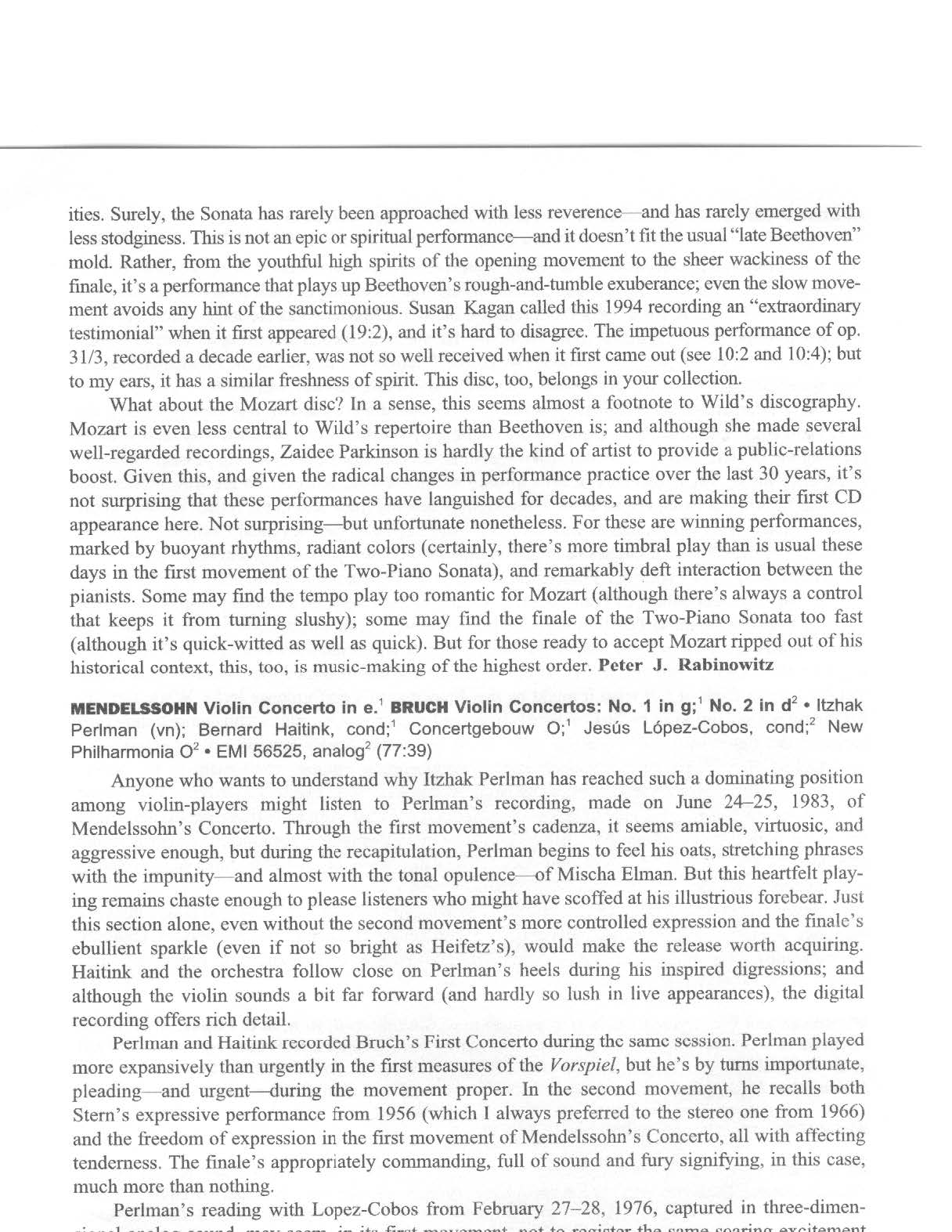Earl Wild: Chopin The Complete Etudes
Earl Wild: Chopin The Complete Etudes
Couldn't load pickup availability
This comprehensive collection of Chopin Etudes on CD offers exquisite performances by legendary pianist Earl Wild from 1992 at the age of 77. Featuring every original etude, this recording is an essential addition to any serious music collection.
Ivory Classics CD-76003
Earl Wild: Chopin The Complete Etudes
Frederic Chopin (1810-1849):
Piano: Earl Wild
Producer: Michael Rolland Davis
Engineer: Ed Thompson
Piano Technician: Paul Schopis
Recorded in Fernleaf Abbey, Columbus, Ohio, June 8-12, 1992
20-bit State-of-the-Art Original recording.
Remastered at 24-bit using the SADiE Artemis
High Resolution digital workstation.
Original and Remastering Producer: Michael Rolland Davis
Original and Remastering Engineer: Ed Thompson
Piano Technician: Paul Schopis - Baldwin Piano
Liner Notes: James E. Frazier
Cover photo of Earl Wild by Richard Pare
Design: Samskara, Inc.
Earl Wild's Chopin Etudes keep us mesmerized because of the endless and absolute poetry of his glowing performance. Recorded at seventy-seven - no rickety joints here, just pure motion and artistry, with the fluid technique and musical depth of a seasoned artist. With age has come a great wondrous wisdom. Originally released in 1992. Remastered 24-bit Pow-r recording. (DDD)
Disc.Reviews
The complete Etudes (Studies) were recorded and originally released in 1992 when Wild was seventy-seven. Again Wild favored a Baldwin piano for the Columbus recording sessions. The first set of twelve Etudes, Op. 10 (1829-32) was published as such in 1833 and was dedicated by Chopin to Franz Liszt. The second set of twelve Etudes, Op. 25 (1832-36) was published as a single volume in 1837 bearing the dedication to Franz Liszt's mistress Countess Marie d'Agoult. In 1840 Ignaz Moscheles and Francois-Joseph Fetis published their celebrated piano instruction book Methode des Methodes de piano (Method of Methods for the Piano). Chopin's Trois Nouvelles Etudes (Three New Etudes) were composed in 1839 as his contribution to the supplementary volume to the Methode. Although the Trois Nouvelles Etudes were actually published in Chopin's lifetime in 1840 it was thought - incorrectly - that they had been published as posthumous works.
Of the Twelve Etudes, Op. 10 (1829-32) Earl Wild's interpretation of the Etude in C major, Op. 10/1 is noteworthy with his right-hand arpeggios sounding like waves lapping on the shore. The soloist in the Etude in A minor, Op. 10/2 has a scurrying quality that feels like a fiendishly difficult exercise. I was impressed by the fun and frolics with the black notes in the 'Black Key' Etude in G flat major, Op. 10/5. One senses that Wild is less comfortable with the serious and nervous temperament of the Etude in E flat minor, Op. 10/6 than my benchmark interpretations from Murray Perahia on Sony Classical and Maurizio Pollini on Deutsche Grammophon. With the repeated notes and arpeggios of the tempestuous Etude in F minor, Op. 10/9 the soloist communicates anger and frustration. A strong feel of the parlor expressed by the Etude in A flat major, Op. 10/10 does not convey the technical difficulties of the study. The final work of the opus 10 set is the appropriately titled 'Revolutionary' Etude in C minor, Op. 10/12. Chopin was inspired to write the C minor by the invasion of Warsaw by the Russian army and Wild does not fail in providing power and tension in profusion.
In first of the Twelve Etudes, Op. 25 the Etude in A flat major, Op. 25/1, known as the 'Aeolian Harp', one marvels at the splendid embellishments and other wizardry that Chopin demands. In the Etude in F minor, Op. 25/2 known by the sobriquet of 'Les Abeilles' (The Bees) Wild convincingly suggests a picture of insects in flight and in the Etude in A minor, Op. 25/4 one feels the temperament of this restless and nervy study. His interpretation of the Etude in E minor, Op. 25/5 is evocative of birds darting around foraging for food. Unlike some performers, he chooses not to accentuate the attractive melody in the central section. The brief Etude in G flat major, Op. 25/9 titled 'Butterfly' is a jovial and swift piece that contrasts with the frenzied attack by Wild in the Etude in B minor, Op. 25/10. The B minor study has a melodic central section that provides a welcome respite. I enjoyed the playing of the Etude in A minor, Op. 25/11 titled 'Winter Wind', a complex and turbulent work that sends a chill down the spine. The final piece of the opus 25 set is the Etude in C minor, Op. 25/12 is noteworthy for its rapid left and right-hand arpeggios over a noble melody.
With the Trois Nouvelles Etudes I particularly enjoyed the Slavic feel to the forthright Etude, No. 1 in F minor. In the Etude, No. 2 in A flat major Wild imparts a disconcerted and restless quality and in the Etude, No. 3 in D flat major a generally pensive mood is established with undercurrents of petulance.
This Ivory Classics release was recorded by Earl Wild in 1992 at Fernleaf Abbey, Columbus, Ohio. The digital quality of this 20-bit State-of-the-Art Original recording is of a high standard, being especially bright and clear with an impressive balance. For those technically minded we are informed that the recording has been remastered at 24-bit using the SADiE Artemis High Resolution digital workstation. James E. Frazier again provides the liner notes and essay; a model of the finest annotation.
Wild with this complete set of Etudes is up against extremely strong competition. There are magnificent sets from Perahia on Sony Classical and Pollini on Deutsche Grammophon that rank amongst their finest recordings (see details below). In the Etudes Perahia is highly compelling, displaying remarkable pianism with a broad expressive range. The digital sound on Perahia's Sony recording has outstanding presence and clarity. Pollini's magisterial accounts of the Etudes are brilliantly characterised totally engaging the listener. I found the admirable analogue sonics for Pollini on Deutsche Grammophon of eminent quality being especially cool and clear.
Michael Cookson, Music Web.com, Feb. 2008
It used to be the case in the not-too-distant past that pianists seldom played or recorded Chopin's two sets of Etudes, Op. 10 and 25. Allegedly, they were too "academic" to please an audience. The truth is, mass appeal had nothing to do with it. Many Carnegie Hall headliners were reluctant to put their careers on the line playing these fiendishly difficult pieces. In this Chopin genre, none but the supplest of finger and wrist need apply. Just check the discographies of some of the most famous 20th century pianists, and you'll see what I mean.
In that light, these 1992 recordings by Earl Wild, originally recorded and now remastered by producer Michael Rolland Davis and engineer Ed Thompson, are a revelation. It's hard to believe Wild was in his 77th year at the time. If anything, his technique is even surer, his tone firmer, than in the 1981 Baldwin Recordings CD that I reviewed recently. His suppleness of wrist shows in the very first Etude of Opus 10, a glorious wash of sound for right-hand arpeggios often with a 6-note stretch between fingers. Etude 3 has one of Chopin's most expressively beautiful melodies sustained by three continuous voices. In No. 5, the "Black Keys," the right hand plays exclusively black notes, giving the piece a zesty pentatonic character. No. 8 with arpeggios covering four octaves conjures up a vision (for me, anyway) of a ballroom with swirling dancing figures. No. 9 is a turbulent study in repeated notes. No. 10 alternates sixths with broken octaves in rhythms of two against three (believe me, it's as tricky as it sounds). Etude 12 is the only one known to have inspired by an actual event, the fall of Warsaw to the Russians. Arpeggios in the left hand create a sense of tumult, while menacing octaves in the right threaten defiance.
The first Etude of Opus 25 is sometimes called the "Aeolian Harp" after an observation by Robert Schumann that it sounded like some marvelous harp with the compass of a piano, playing "fantastic embellishments, but always with an audible deep tone in the bass and a softly singing melody in the treble." Earl Wild re-creates this delicious dream image to perfection. Etude 5 involves alternating leggiero and scherzando phrasing with grace notes and passing tones in the outer sections, giving the impression (to my mind) of a bird with a broken wing. In the middle section we are surprised by one of Chopin's loveliest melodies. The bittersweet melody of Etude 7 runs it a close second. Etude 11 has a quiet march-like opening followed by more turbulent material. Often nicknamed the "Winter Wind" (though not in the booklet annotation, which eschews descriptive names), it provides Wild with one of his finest moments in the entire set. In Etude 12, with its cascading arpeggios in both hands, Wild follows Rachmaninoff's practice of playing octaves on the first beat of every measure. The result sounds like the relentless onslaught of great ocean rollers on a deserted shore, and in fact "Ocean" is the popular nickname of this piece.
Wild concludes the recital with the three Nouvelles Etudes (often miscalled "Posthumous," though they were in fact printed in 1840 when Chopin was very much alive). They are, if anything, even more difficult than the average for Opus 10 or 25, as witness No. 3, which involves simultaneous staccato and legato in the right hand. Not, of course, for Earl Wild, who shows the same consummate mastery here as he does elsewhere in the program.
New Classik Reviews, Jul. 2007












































